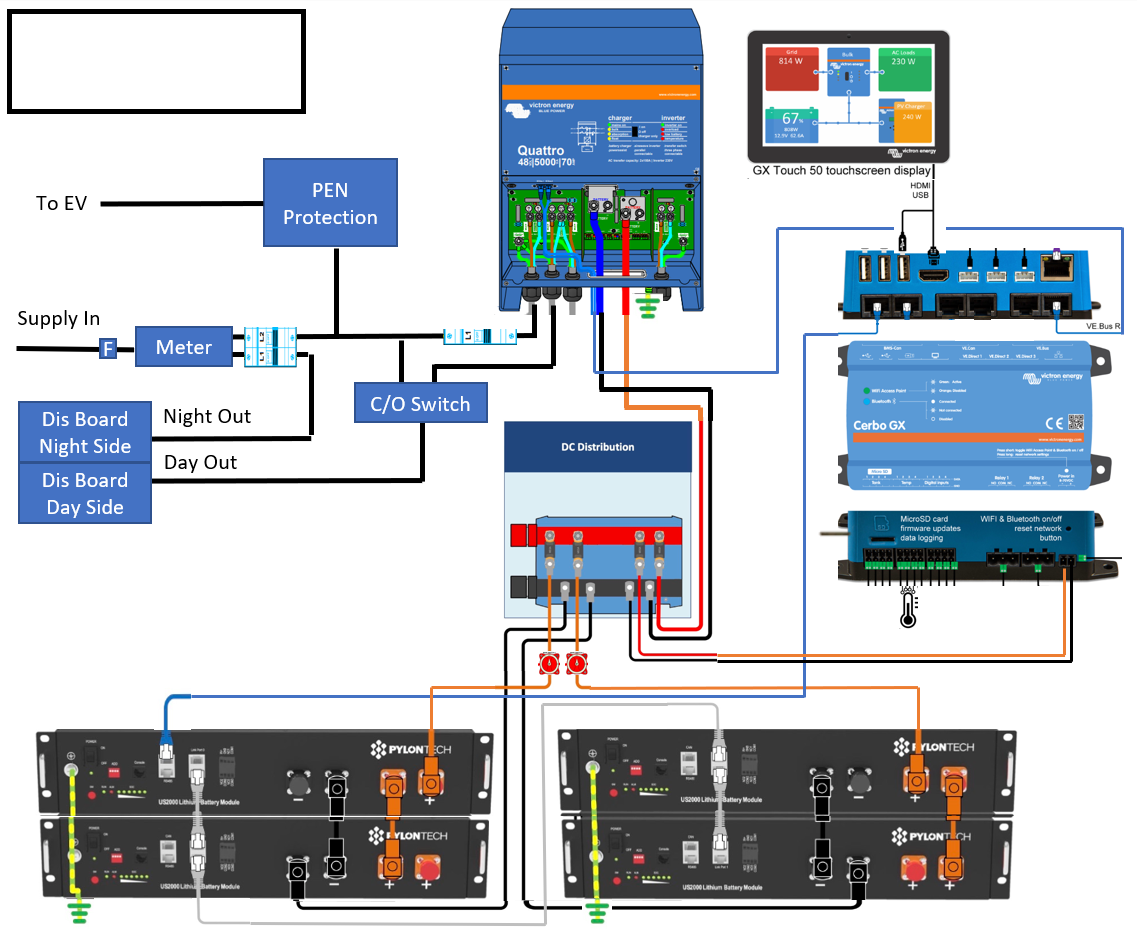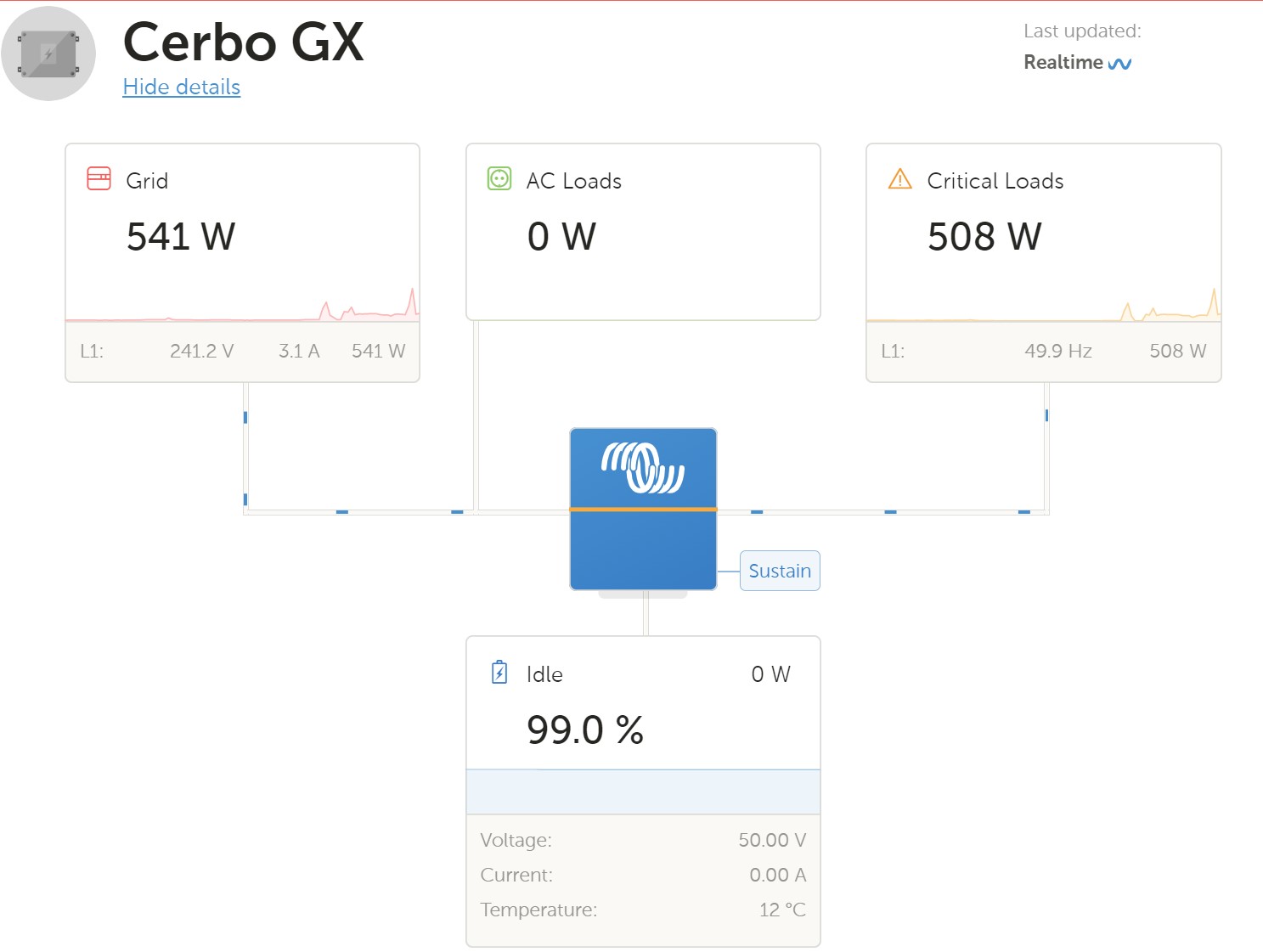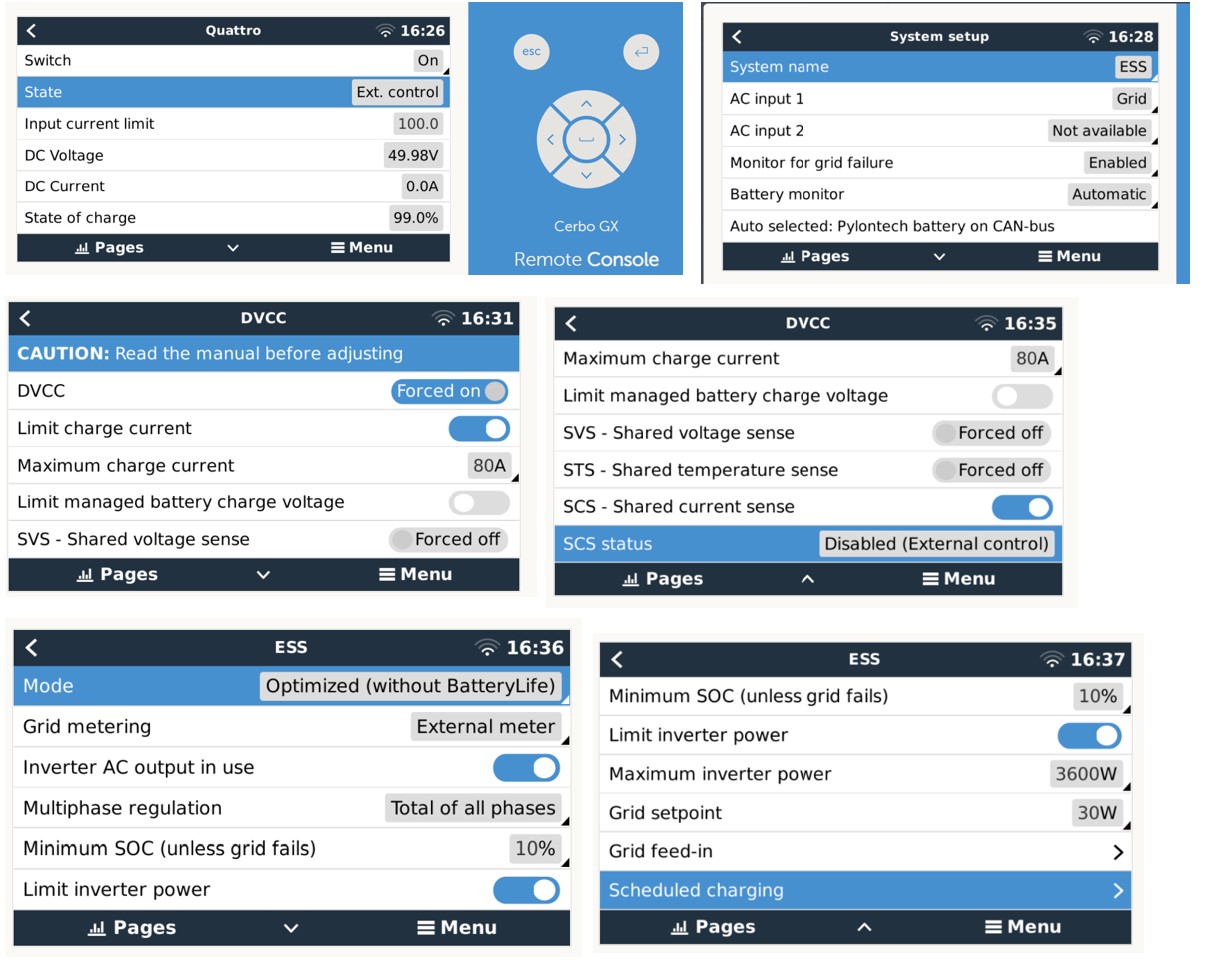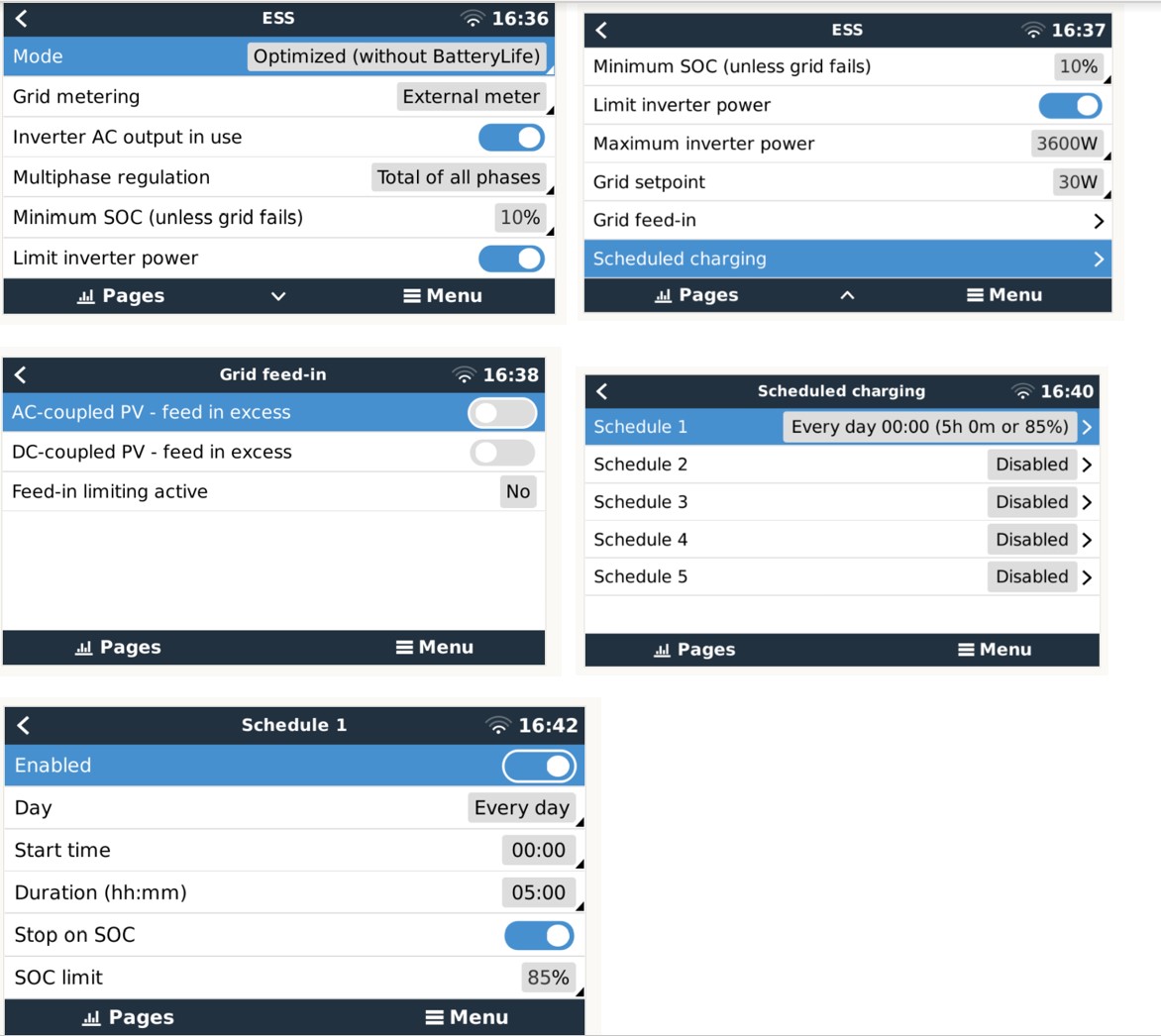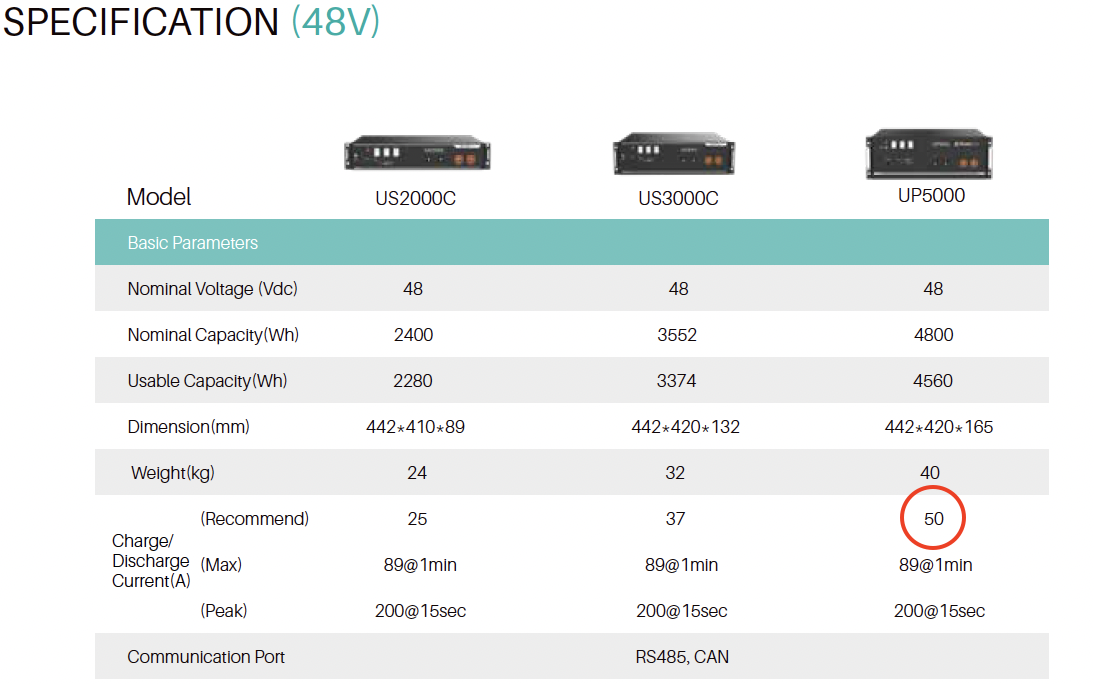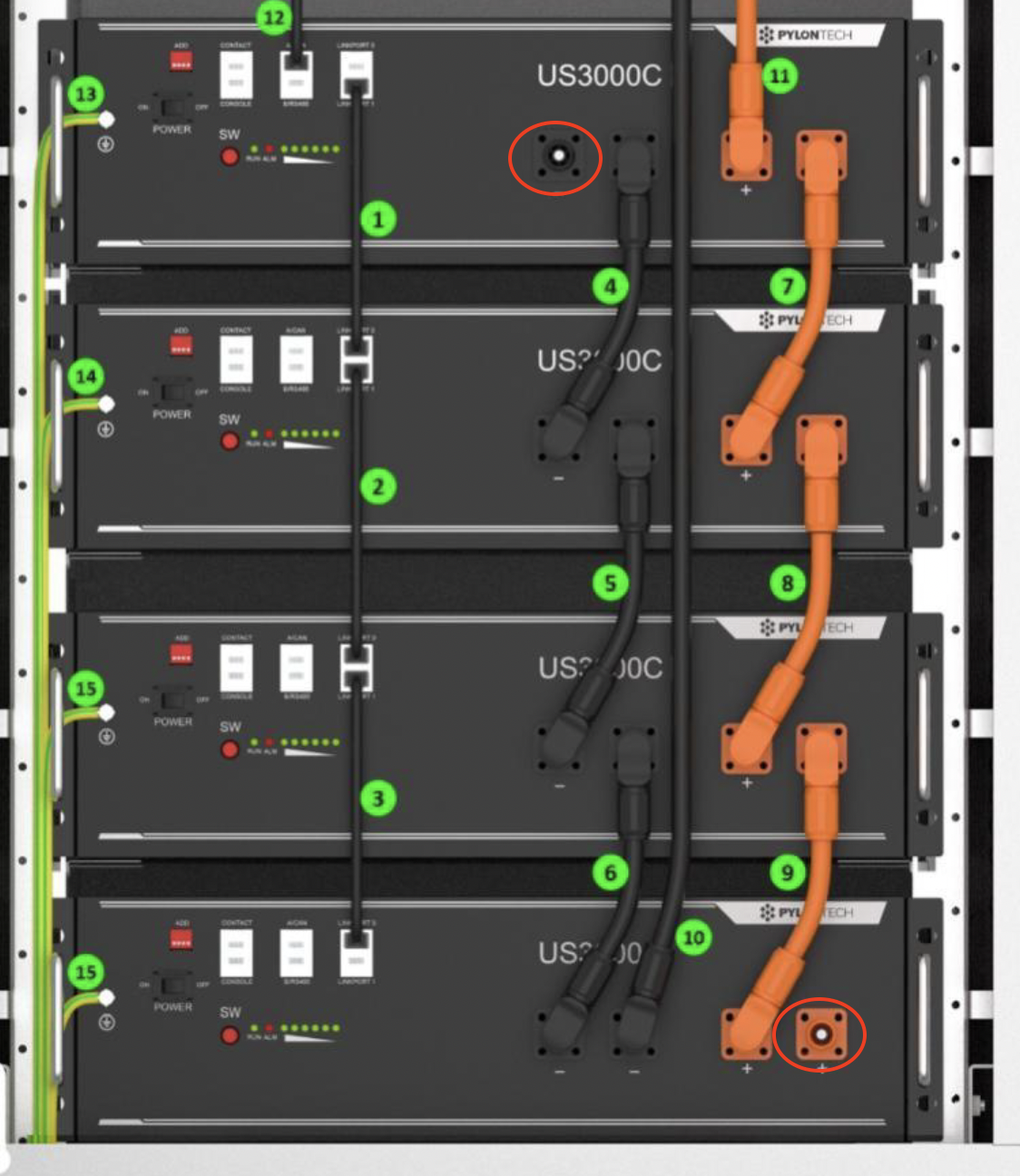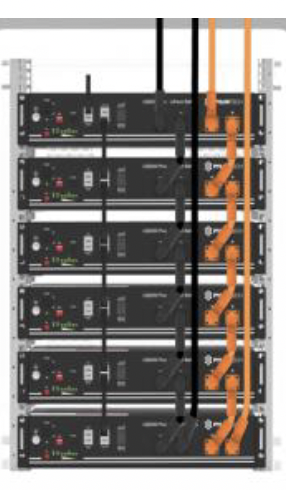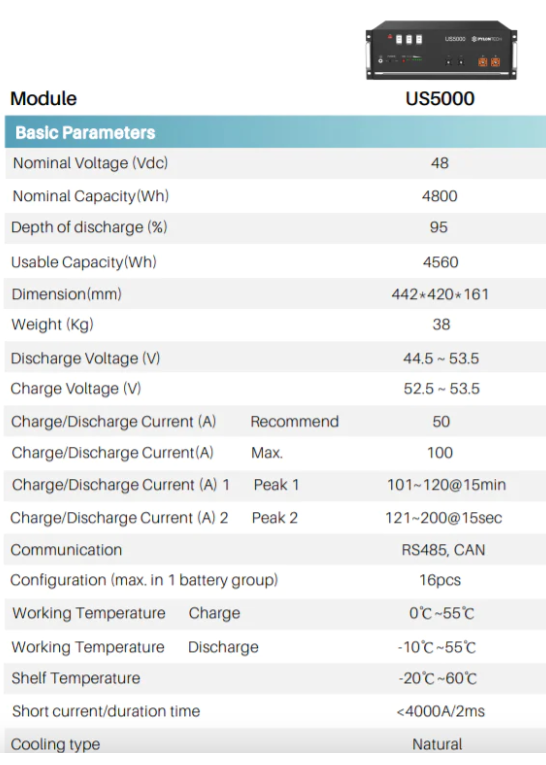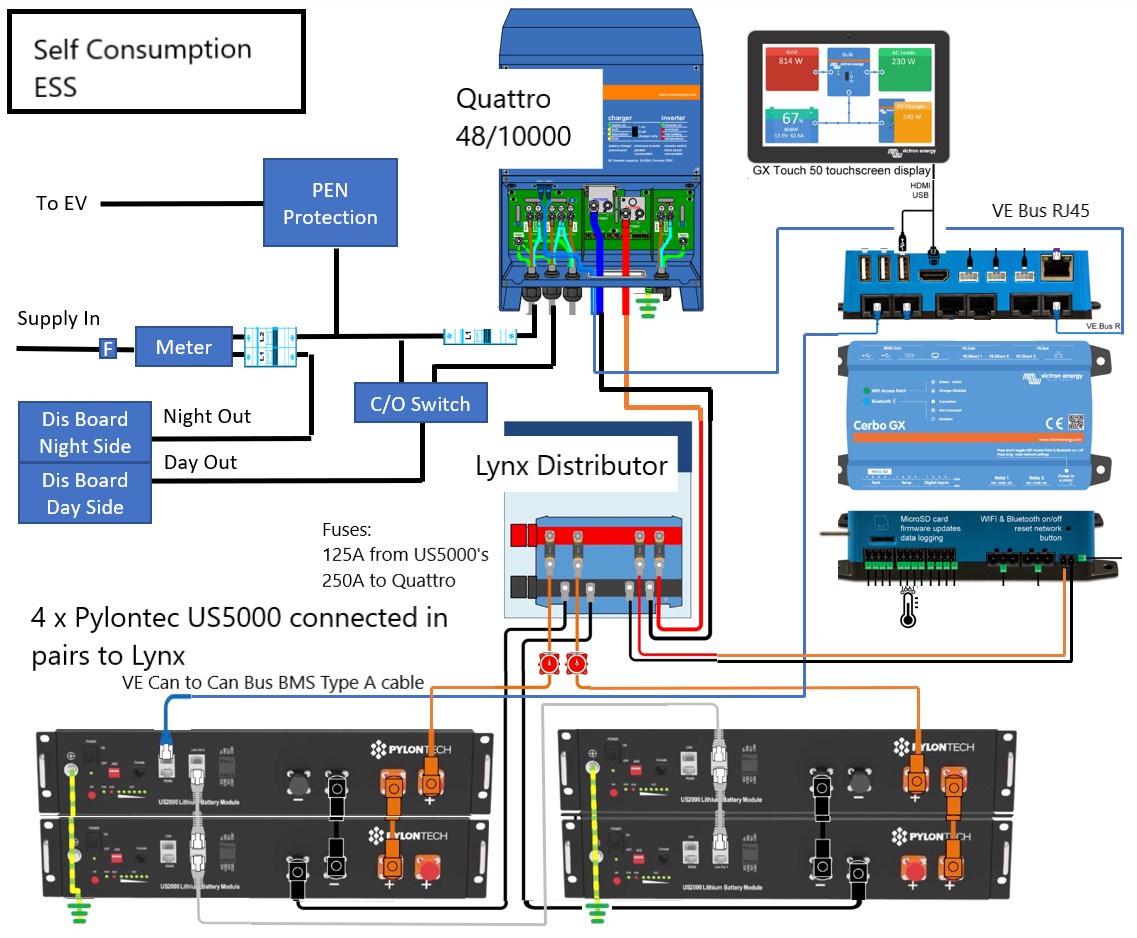Hi, having taken earlier advice I am now the proud owner of a Quattro 48/10000, 4x Pylontech US5000 batteries circa 19kwh, Cerbo GX, Cerbo GX Touch 50 and this week my electrical supply has switched to EDF GoElectric 35 which gives me 5hrs low rate overnight.
Our house is fully electric and is split economy 7 style.
Night loads such as storage heating/immersion heater being fed from the switched smart meter 5th terminal for 5hrs on low rate overnight. I want to leave this unchanged and is working perfectly.
All other loads are fed from the 24hr smart meter 4th terminal which is both high and low rate depending on the time of the day/night. My EV charger is connected to this and want to continue with this being supplied direct from the grid and not from my batteries, so my understanding is I need to effect changes downstream of this connection.
My simple 24hr use case is
1. Charge batteries overnight during the 5hrs low rate as well as continuing to power all loads. The Quattro 48/10000 invertor is sized to be able to charge my batteries during the 5hrs as long as I keep the batteries above 10degC.
2. When low rate is switched off, use the batteries to power house loads via the Quattro with the grid providing additional power as needed to meet peaks or pick up when the batteries are depleted and awaiting the next overnight charge cycle. By my calcs the quattro / pylontech combination is able to provide circa 4.8kw but will probably limit this to below 3.6kw. My house peaks at circa 8kw on occasion so I will need to draw circa 4.4kw from the grid in addition to the batteries supply for short periods.
I am pretty confident that my purchases can be configured to do all this, but I am struggling to find a definitive way connect everything and was thinking there must be. I do not intend to fit solar due to poor roof orientation.
I would be most grateful if someone can point me in the direction of a detailed diagram that I can use as a starter.
thank you in advance.

